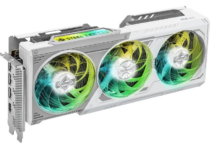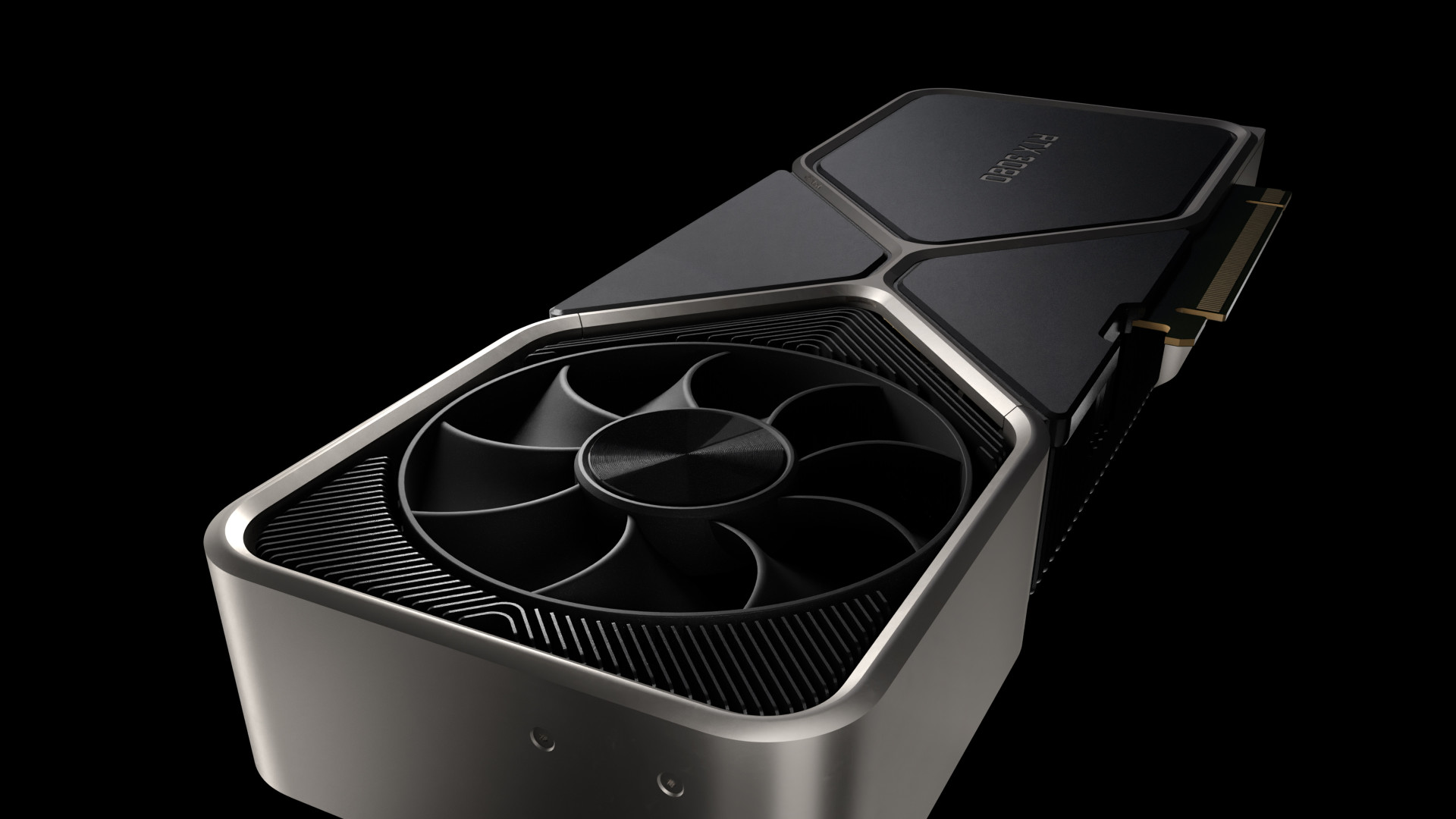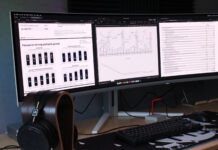be quiet! is one of the lesser known power supply brands, but it has chosen to specialize in an area which is growing more and more popular nowadays: low noise. In our latest review we see if it has what it takes.
The amount of power-hungry computers has increased greatly these past few years and a lot of it is because of what they’re used for nowadays. Today, there are games with cinematic quality and both processors and graphics cards require a lot of power to run. The CPU manufacturers have battled the power consumption for a long time now. Manufacturers of graphics cards, on the other hand, are partly to blame for this, but with the latest generations of graphics card circuits, they’ve surely increased their fair share of the consumption. Today you can get a graphics card with two cores and if you want to set these up in an SLI and CrossFire solution there are requirements for the power supply unit being able to deliver a certain amount of Ampere. Simple mathematics says that two graphics cards consume more power than one. But how much could a computer in the upper high-end segment consume in terms of power? Well, as an example, NVIDIA would like to see a PSU capable of providing at least 600 Watt installed if you choose its top-of-the-line graphics card, and it’s here that we get to the interesting part. There are dozens of 400 Watt PSU manufacturers, but the higher we go in terms of power; the fewer manufacturers are left to provide such products.
Be Quiet! is a brand that manufactures power supply units like the ones I just mentioned. Be Quiet! has now launched an additional series of units built upon the previous one, by the name of Straight Power. The name, Be Quiet! Straight Power, could seem to be complicated, but the thing is that the Straight Power series is one step further in the manufacturing of Be Quiet!, keeping the silence and adding features to satisfy the great power demands I mentioned earlier. Thus, a quiet power supply unit with a lot of power.
We’ll see if the silence is still there when we’re done with this review.
| Specifications | |
|---|---|
 |
|
|
Voltage/Current
|
|
|
+3.3VDC
|
35A
|
|
+5VDC
|
30A
|
|
+12VDC (12V1)
|
18A
|
|
+12VDC (12V2)
|
18A
|
|
+12VDC (12V3)
|
18A
|
|
+12VDC (12V4)
|
18A
|
|
-12VDC
|
0.5A
|
|
+5VSB
|
2A3A
|
|
Total maximum output
|
700W
|
|
Maximum output +3.3V & +5V
|
180W
|
|
Connectors
|
|
|
Molex connectors
|
8
|
|
Floppy connectors
|
1
|
|
Serial-ATA
|
6
|
|
PCI-Express
|
2
|
|
Other connectors
|
3 fan connectors
|
|
Other specifications
|
|
|
Amount of fans
|
1 x 120mm
|
|
Certificates
|
CE, CB, D, FI, S, N, TÜV
|
|
Miscellaneous
|
Gold plated connectors, power cable, cable wraps, screws |
|
Warranty
|
3 years
|
|
Price
|
€130
|
Be Quiet! delivers its Be Quiet PSUs in a box that could’ve been used for graphics cards. CMYK prints with the typical lid that covers the product itself. An interesting thing is that on the back of the box, you’ll find a schematic over all the cables for the PSU. This is something we haven’t seen before and something that we appreciate since many manufacturers only specify the amount of connectors that are available. You don’t have to say much about the 3 years of warranty since “everyone” has it today, but it should be mentioned nonetheless.
 |
 |
 |
 |
Apart from the PSU itself, we can see a manual, four thumb screws, four regular screws, cable ties and cable wraps
 |
 |
The unit is glossy, thus practically impossible to handle without putting revealing finger prints on it. It sure is glossy and the mirror image of the coin speaks for itself. The manual is pretty well-written and printed in CMYK, which isn’t all that common. The PSU itself is built after the ATX 2.2 specifications but also follows BTX 1.0a and E-ATX. The last one is for server configurations with dual processors, hence the EPS connector (8 pins).
 |
 |
 |
 |
After all this exterior inspection, we’ll proceed to our testing setup to see if Be Quiet! has done its job when it comes to this unit.
Our synthetic tests are carried out in two parts, one in idle mode and one in full load mode. The PSU is run for about 30 minutes with an opening session of idle load and then a full load test. In the idle mode test we’ll put load on the three main voltage rails (+3.3V, +5V and +12V1) with about 1 Ampere each. This test is to see how the PSU is performing during idle load.
During the high load test, we’ll load it with maximum power to see if the unit can keep the voltages and ripples within the threshold values. This is done to see if the PSU keeps its promises. During both of the tests, the voltages and ripples are measured constantly. The second step is done in an ordinary computer. Now then, let’s see how well it performs in our power tests.
Be Quiet! Straight Power 700W is very quiet at low power consumption. This is the first impression I get from this part of the test. You can see the fan spinning but if you stand about a meter from the unit, you’ll barely hear it. Concerning the voltages, there’s not really much to say about them, except for the fact that they’re almost perfect and the low amounts of rippling in the different measurements are negligible. This being said, we’ll get to the high load test to see if those promised 700 Watts are really there.
After an introductory period up to full effect, you can tell from the unit that it has to work harder and harder. Naturally, the fan is spinning faster, and at certain speeds it reaches resonance and makes a small whistling noise. At maximum load, the fan is making more of a whining noise, but it’s far from annoying, and the fact is that I’ve heard noisier PSUs when they’ve practically had no load at all. So the bottom line is that Be Quiet!’s choice of the fan is very good. The unit doesn’t get that hot either which feels promising. When it comes to voltages and ripples, there’s not much else to say in addition to them being within margins. These values are pretty much what we expected and they don’t really stick out from the crowd. The values in the diagram are actually measured during maximum load and show that the PSU actually keeps its promises, no more and no less. But now we’ll take a look at what the unit can do for a computer with pretty average requirements, so let’s turn the page and dig in to the computer test.
|
Test system computer
|
|
| Processor: |
AMD Athlon 64 3000+ Socket 939
|
| Case: |
Standard ATX
|
| Motherboard: |
Asus A8N-SLI |
| Memory: |
2048MB DDR-SDRAM |
| Graphics card : |
MSI NX7800GT 256MB |
| Harddrive: |
Maxtor Diamondmax 9 200GB |
|
Software
|
|
| Operating system: |
Windows XP Professional SP1
|
| Benchmark program: |
Sisoftware Sandra 2004 |
As you can see the computer configuration is pretty average when it comes to power consuming components.
Be-Quiet! Straight Power 700W has been designed to be able to power a SLI/Crossfire configuration with a lot more consuming components. Other than that our test system holds three harddrives whereof two are in a RAID set, an overclocked processor and a graphics card for games. This should be able to put some pressure on the PSU, partly to see what voltages we see during an average load and what kind of noise the power supply will emit.
Speedfan was used to measure temperatures and fan speeds of the motherboard and processor and Futuremark 3Dmark2003 was used to put load on the system.
After A day of regular use the temperature inside the case is where it is suppose to be; 34°C. This means that the fan in the power supply performs well. It creates a good flow through the case in relation to its speed.
When it comes to the voltages it’s really stable and alters very little. The variations are very small with a small dip on the 5V rail as the most obvious occurrence. We should mention that the 12V1 dips some, but is still above the mark.
The diagram has been divided into three parts where the first covers 3.3V and 5V and the second the four 12V rail.
The figures are really generous since many power supplies starts to choke at this level of power drainage. By that I mean that all voltages starts to wander downwards and starts to close in on its respective marks. But as stated, this is a 700W power supply so it’s suppose to perform over expectation in this test.
This leaves us with the conclusion. Do we like what see or should Be Quiet! go back and try again? Move on to the next page and you will find out.
Be-Quiet! is a truly interesting name and it’s hard to interpret it wrong. And to top it all off they end it with an exclamation mark to show that they are really serious about it.
With the Straight Power series they hope to raise the bar when it comes to high power, low noise, stable voltages and a low ripple. Three of these have a tendency to move in different directions when the power goes up. The voltage goes down, the ripple increase and what is the most obvious to the buyer; the noise increases significantly at higher power.
But Be-Quiet! Straight Power has almost managed to fix this negative phenomenon. Sure, the voltages dip and both ripple and noise does increase at a high load, anything else would be physically impossible, alas. But as we said before, they have done a very good job with this power supply.
On the negative side of things we have the fact that the cables aren’t modular, I.e. just connect the cables you need instead of having them all hanging and dangling inside of the case.
Is it worth spending up to €130 on this power supply when there are cheaper versions? In this case there is just an obvious answer and it’s a screaming YES! When you close up to this kind of power the range of well performing power supplies are rather narrow and you can’t trust anything but the raw information about the power supply. If you start to close up on the need for this kind of power the other components of your computer is most likely also quite expensive so €130 shouldn’t really be that much of a problem. Why risk having a constantly rebooting computer, which will give you reoccurring headaches before you discover what the cause of the problem is. Because you get more than just a well performing power supply if you invest in a Be-Quiet! Straight Power, namely a very quiet power supply, many connectors and lengthy cables.
|
Be-Quiet! Straight Power 700W
 |
| Pros: + 3 year warranty + Quiet + Stable voltages + The ripple Cons: |


















